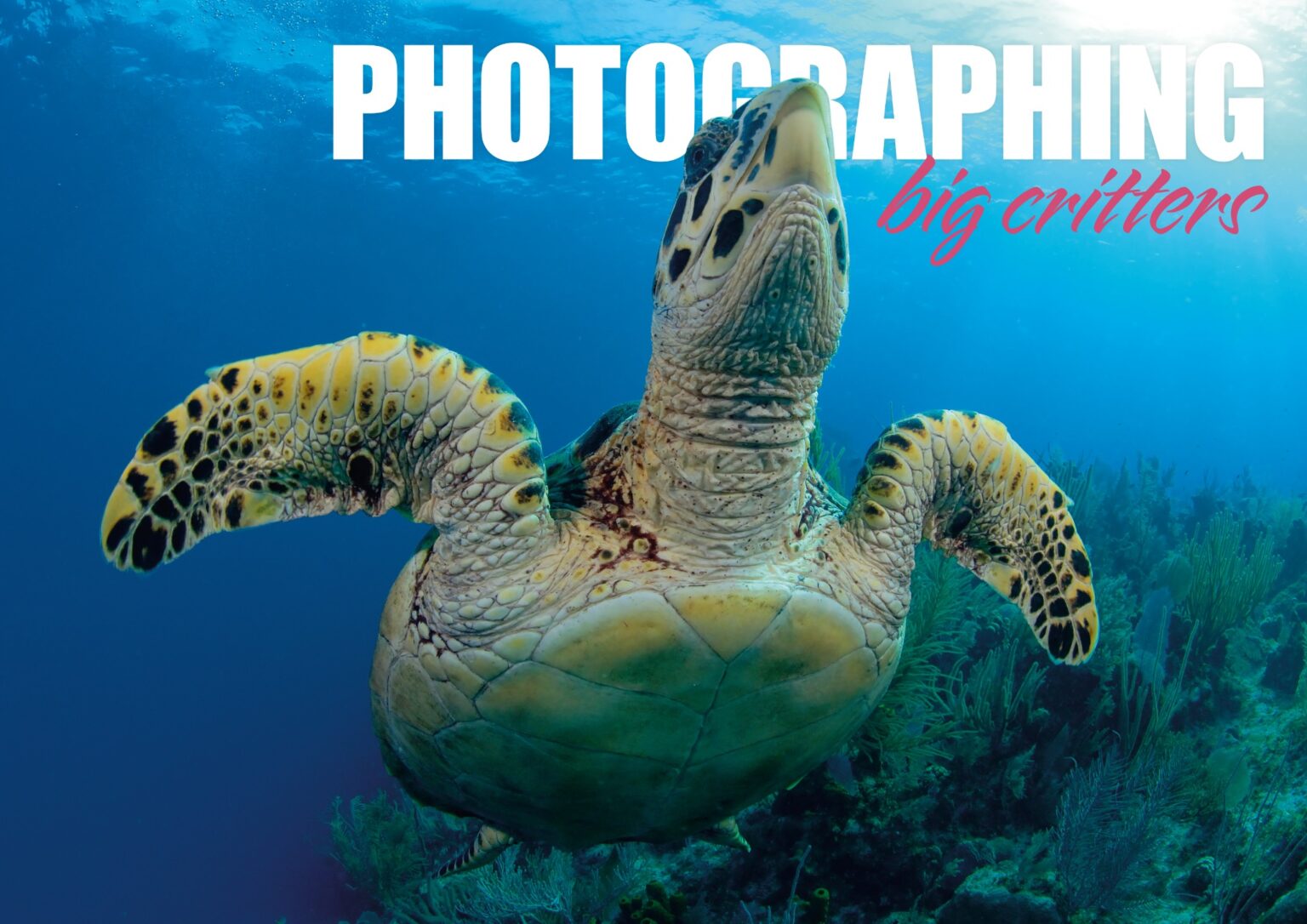Lawson Wood offers some sage advice on how to get the most from your encounters with the bigger species that inhabit our world’s oceans.
Photographs by Lawson Wood
While we all love the vibrancy of colour found in most macro subjects, particularly nudibranchs, shrimps or starfish, many of us are just not prepared for when a huge fish or mammal swims by! Ill-prepared, invariably we just let the critter glide by and perhaps get a token photograph of some aspect or other.
Gear Preparedness for Big Marine Subjects
When looking to specifically photograph large critters, you have to be somewhat more prepared and do a bit more homework to optimize your time in the water. Medium to wide-angle lenses are the norm and while most proprietary camera manufacturers all produce such lenses, most compact cameras require the addition of a wide-angle supplementary lens which can fit on the outside of the waterproof housing.
DID YOU KNOW
Hawksbill sea turtles get their name from their unique beak-like mouth, which resembles that of a hawk and is perfect for finding food sources in hard-to-reach cracks and crevices. They inhabit all of the world’s major oceans.
Popular Big Marine Subjects for Divers
Divers can now swim and photograph really big critters such as whalesharks, manta rays, whales of various species from beluga in the White Sea to sperm whales off Dominica, dolphins in the Bahamas, turtles almost everywhere in warm waters and, of course, the seemingly endless massive shoals of fish and their predators.
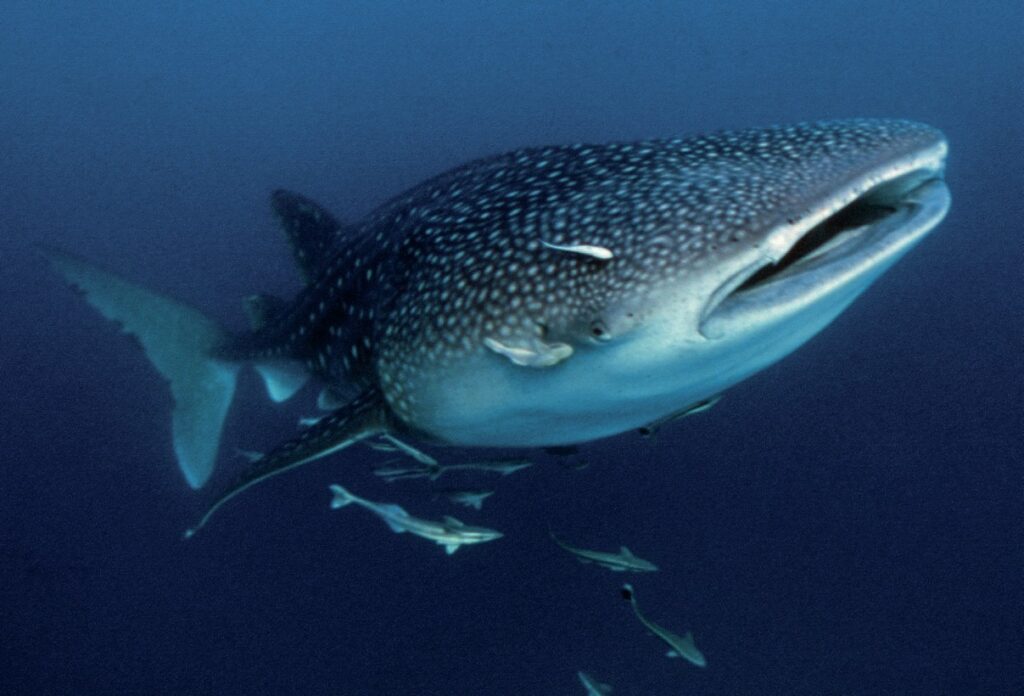
The Importance of Prior Research
However, we must undertake some level of research before we embark on what may be a very expensive dive/photography trip. We need to find out the best time of year; an idea of the weather pattern; the likelihood of having a good encounter; the experience of the trip leader or other members of your group and many other factors.
Be armed with as much knowledge as possible, as it would be foolhardy as well as costly not to do so before a trip. Talk to others who have been on similar excursions and find out what equipment is best suited for the job.
Sharks: The Center of Attention
Sharks always grab everyone’s attention and in many locations around the world, you can book a dive holiday to witness a shark feed. However, on our home turf in the UK, we can have encounters with blue sharks (albeit also baited), but we can also have fantastic encounters with basking sharks in several locations and, of course, our fabulous friends, the seals. For those of us that are not that interested in even getting wet, we can photograph various sharks, turtles and rays in aquariums all over the world.
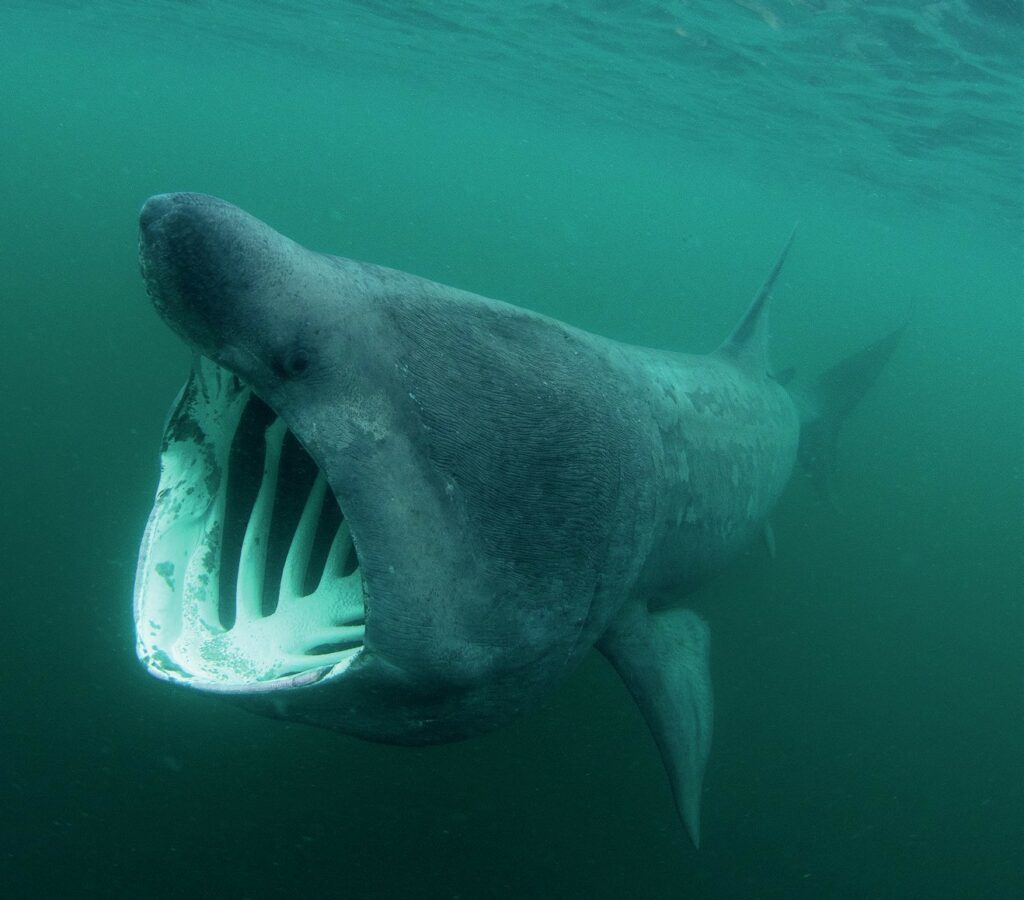
The Bahamas: A Diver's Paradise
In the Bahamas, Stuart Cove and UNEXSO both have shark-feeding encounters. At UNEXSO on Grand Bahama Island, dive groups are led out to a sandy clearing beside the spur and groove reef. The shark feeder (in a chainmail suit) soon holds court to a large group of Caribbean reef sharks (Carcharhinus perezi).
This isn’t a free for all for the sharks, rather it is a controlled feed with divers enjoying the opportunity of being able to swim among large numbers of sharks. Curiously, once you see the pattern of the sharks’ behaviour, you can take great shots of sharks among the coral reefs, instead of in an obvious feeding arena.
Hollywood's Go-To: Stuart Cove
Stuart Cove has taken this a few steps further and has become the guy that Hollywood turns to when they want sharks in their underwater adventures. He has pioneered a number of shark encounters including oceanic whitetips down off Cat Island; fabulous great hammerhead encounters off Bimini; Caribbean reef sharks off New Providence Island; and lemon sharks; nurse sharks; bull sharks; blacktips and the major predator in the Caribbean – tiger sharks – off the north coast of Grand Bahama Island at Tiger Beach.
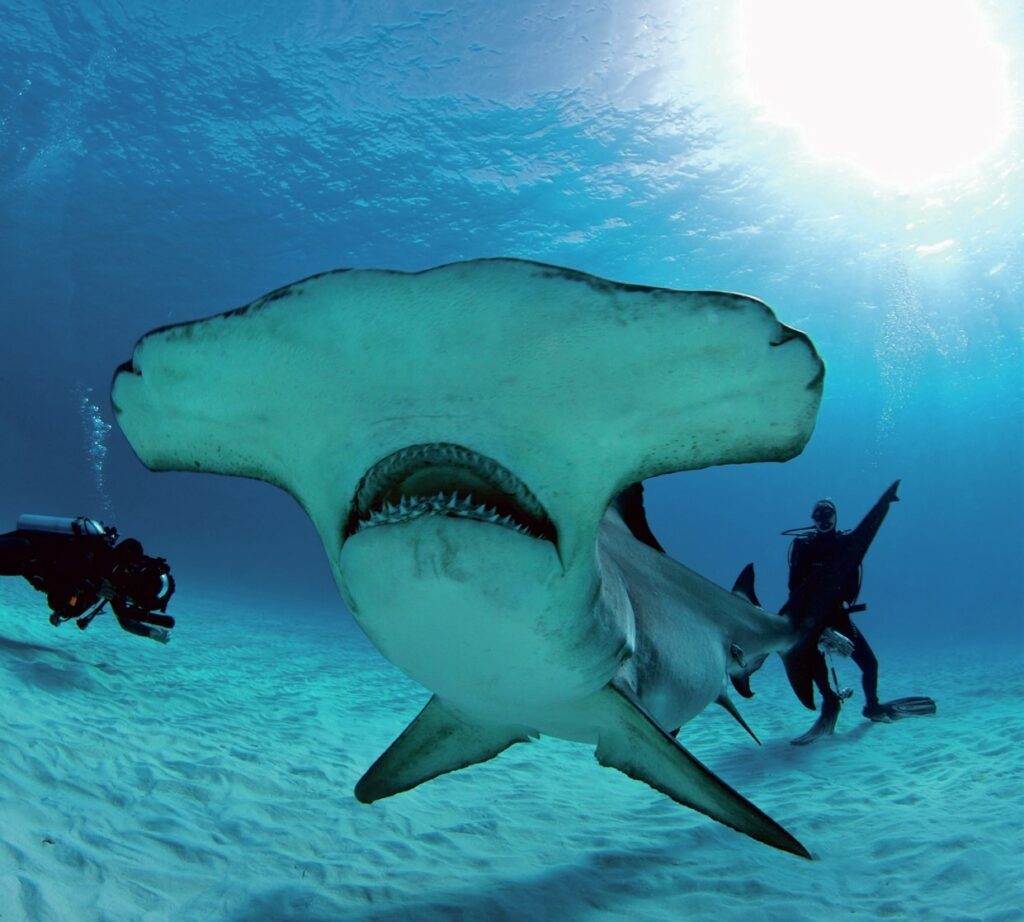
Diving in Exotic Locations
Most far-flung destinations such as Layang Layang, Sipadan, Polynesia, Australia, Bali and many others have plenty of different species of sharks and turtles to be found on virtually every dive. Excluding whalesharks, further down the scale in size of individual animals, you do get huge schools of fish, marlin or sailfish off Isla Mujeres in Mexico.
We all know the spectacle of swimming around the wall at Ras Mohammed in the northern Red Sea, as there are barracuda, batfish, emperorfish, unicornfish and many others all swimming in vast numbers in perfect unity seemingly unaffected by any ocean currents.
Down near Marsa Alam there is also a resident group of dugong. There are the Sardine Runs off South Africa, the herring run of northern Norway and Caplin off Newfoundland and many other natural, but mind-blowing phenomenon.
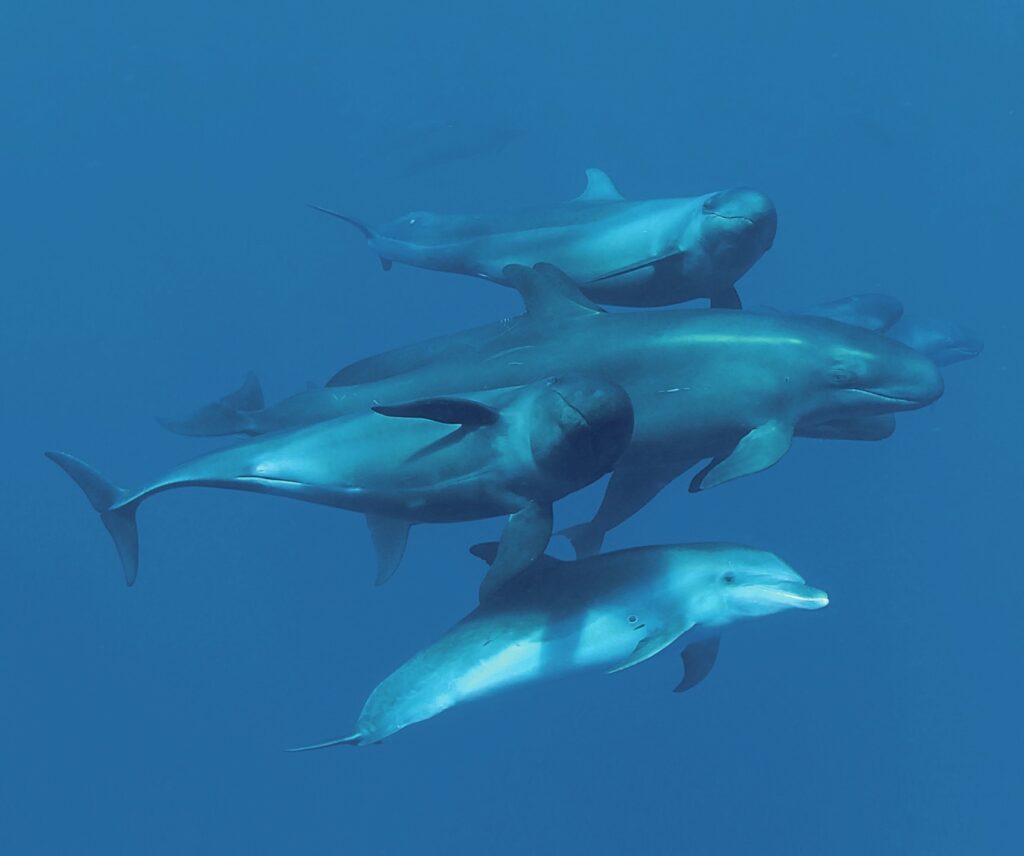
Approaching Large Species with Caution
Large species should always be treated with the greatest respect and may be approached within reason, but you will find that your fellow divers or snorkellers also want to approach the subject at the same time as you.
This accumulation of diver attention invariably frightens the creature and nobody gets to enjoy the encounter, as the selfish will always try to push to the front. As with all wild animals, try not to invade their personal space too much and perhaps if you are relaxed enough and are not swimming frantically after them, then the subject of your photographic frenzy may actually come and look at you out of interest.
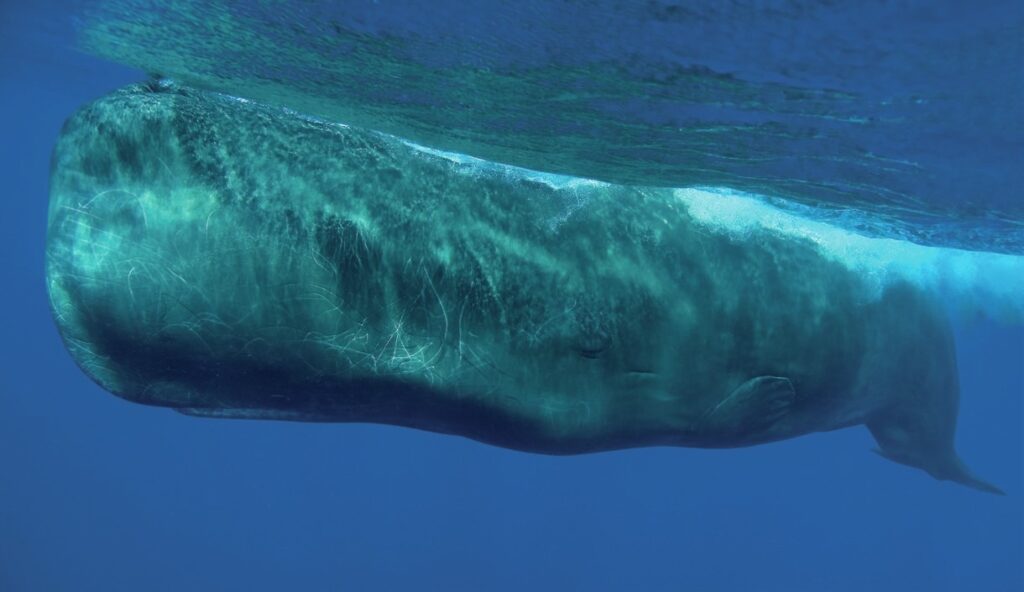
A Dive into the Life of Hawksbill Sea Turtles
Try and witness the behaviour and swimming pattern or direction of the subject before you get in the water as this will give you an idea of its general direction, such as with the basking sharks off Mull and the Isle of Coll off the west coast of Scotland. This is the second largest fish in the sea and the largest shark in temperate waters.
The basking shark’s snout may be a good four to six metres in front of the dorsal fin, so to try and get the ‘money-shot’ you have to swim to an approximate area of open water well in front of the shark to allow the shark to come towards you. In reality, it doesn’t always work out like that.
Meeting the Gentle Giants: Manatees
Probably one of the most-amazing encounters that you can have in fresh water is with the manatees in Crystal River, Florida. These gentle giants over-winter in the fresh water springs where a constant temperature of water allows for good algae growth as their food source, but also provides a safe environment where they have their young, well away from the cold winter seas off the coast.
Here you can get very close to these gentle giants and while the encounter feels like exploitation, they clearly do not mind the intrusion into their lives. As long as you have patience with the other hordes of interested tourists, you can take your time for some amazing photographs.
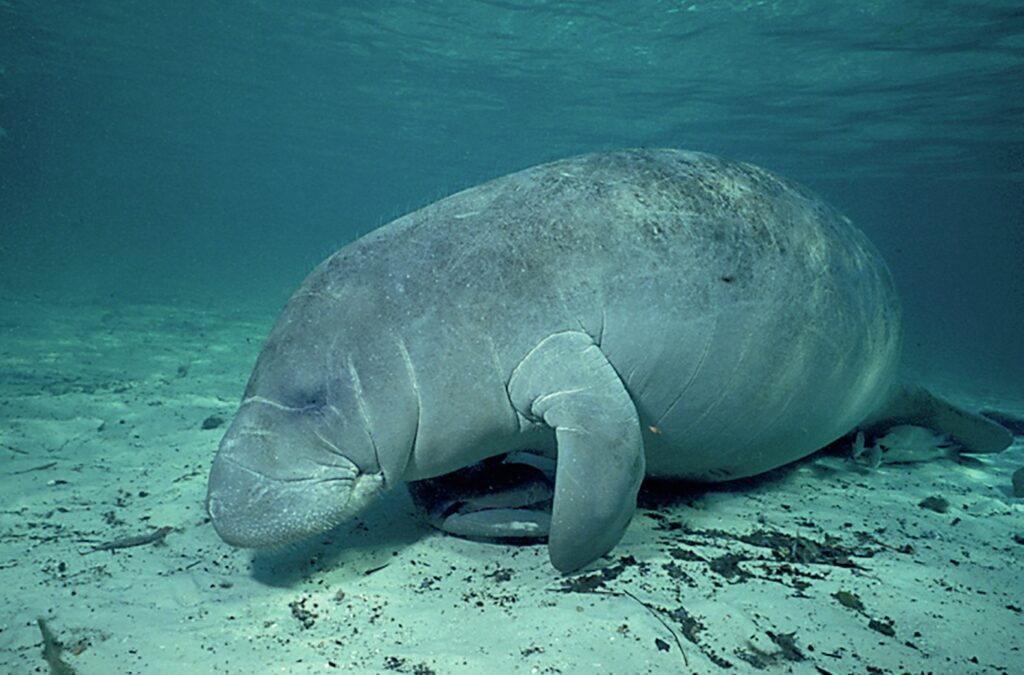
Swimming with Stingrays
Stingrays may not be in the big critter list, but these can grow over one-and-a-half metres across and when surrounded by a dozen or more, it can feel quite intimidating. However there a number of locations where you can swim with stingrays, with the best known at Stingray City and the Sandbar off the north shore of Grand Cayman Island.
For many years now, these stingrays have trained local snorkel and dive operators to give them a free meal of fish and squid. Once the feeding part is over, the rays quickly return to their normal foraging on the seabed, yet still mingle among the divers.
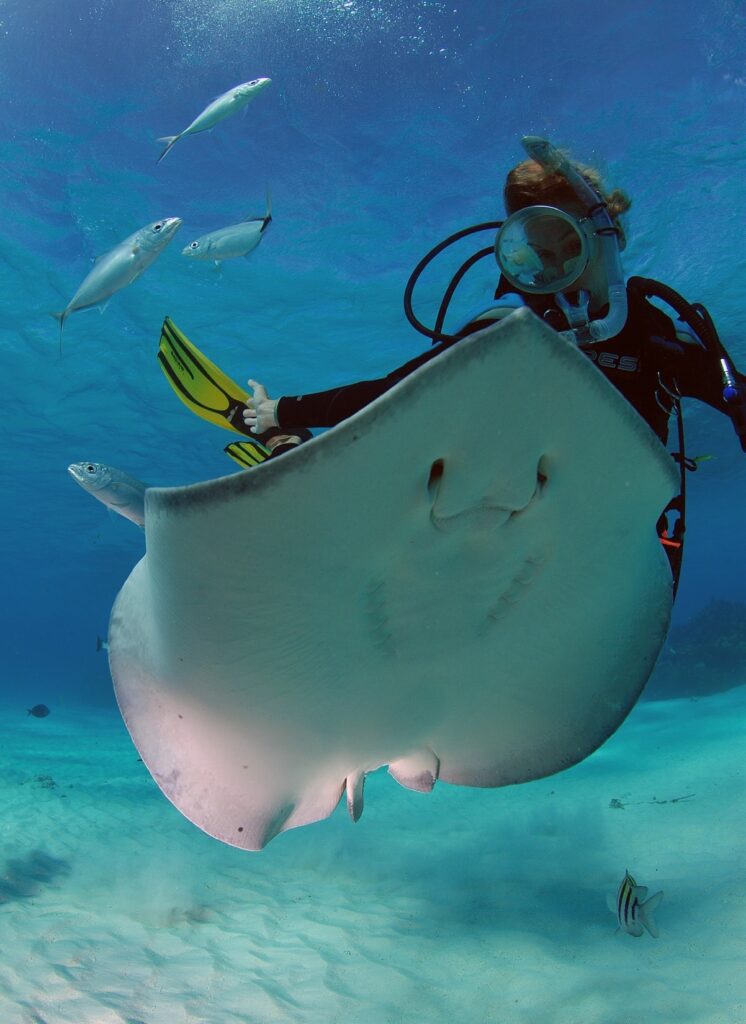
Exploring Home Waters: Encounters Close to Home
No matter where you are from, you do not have to travel the planet to its far-flung reaches to get the best encounters with big critters as you can often have fun in home waters, such as with grey and common seals around the UK. Although most divers encounter the grey seal, the common seal can be found off the Cairns of Coll and the Isle of Mull, as well as a few locations along the southeast coast of the UK. Smaller in size than the grey seal, they are much more skittish, but with patience, they will come quite close to you.
Diving with Seals at the Farne Islands
The Farne Islands are undoubtedly one of the most popular places to swim with the seals as for many years, seal encounters have been on everyone’s list. Here the seals are well used to divers and appear to take great delight in trying to ambush you, pull at your fins and generally play hide and seek while you try and capture the best view of these amazing creatures.
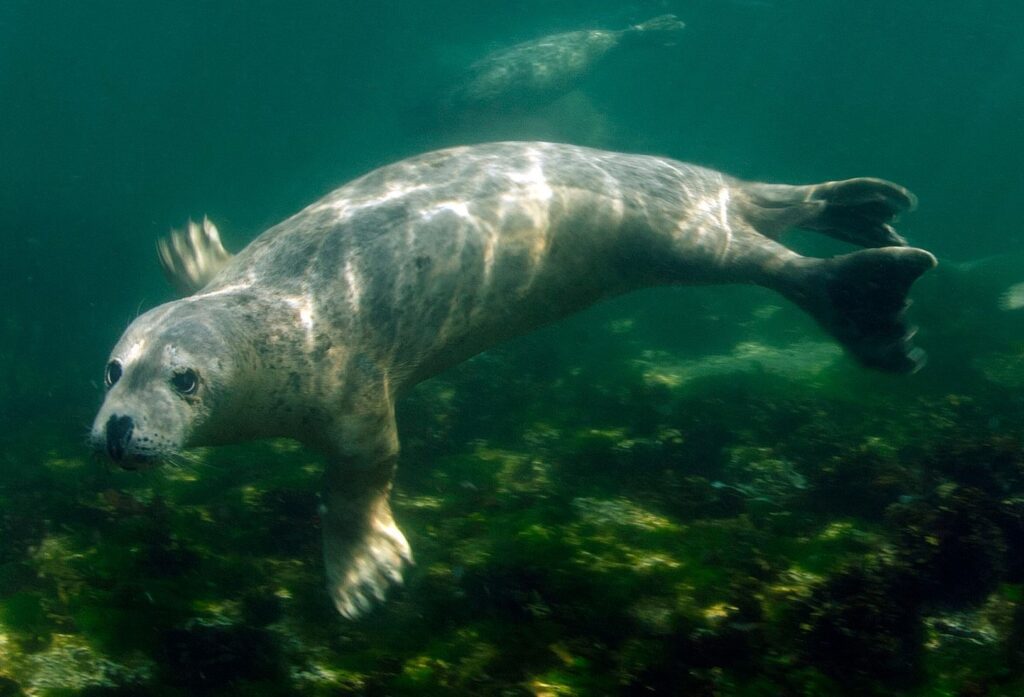
Dive Center Views on Marine Interaction
Many dive centres take a very strict view on big critter interaction, however we all know and understand that if the wild creature does object to your intrusion into its personal space, it will quickly leave the area.
Many creatures actually appear to enjoy the interaction with us clumsy creatures, such as with seals and sea lions, it is with these rare encounters that we can explore our photographic potential and have some fun too! We have even found that some whalesharks also enjoy the encounter and will stop in the water and look at you.
Choosing the Right Lens
Photographically speaking, these encounters are with a wide-angle lens of some proprietary make or another. While we all love the extreme wide-angle lenses, particularly if the critter is really big, such as a whaleshark or whale, but quite often these lenses are often just a bit too wide and the subject matter can look lost in the frame. So, switch to a smaller focal length lens such as 20mm or even a short zoom to give you a little more flexibility. Then again, go with what you know best and crop the photo accordingly later!
The Awe of Underwater Giants
Suffice to say that you can plot and plan and scheme all you want to, but when faced with the sheer thrill of swimming with some of the large marine creatures and fish on the planet, more often than not, I forget to take the photograph, as I am just in such awe of the spectacle and the humble feeling that comes with being in the same space as these giants of our underwater world.
This article was originally published in Scuba Diver UK #73.
Subscribe digitally and read more great stories like this from anywhere in the world in a mobile-friendly format. Link to the article
